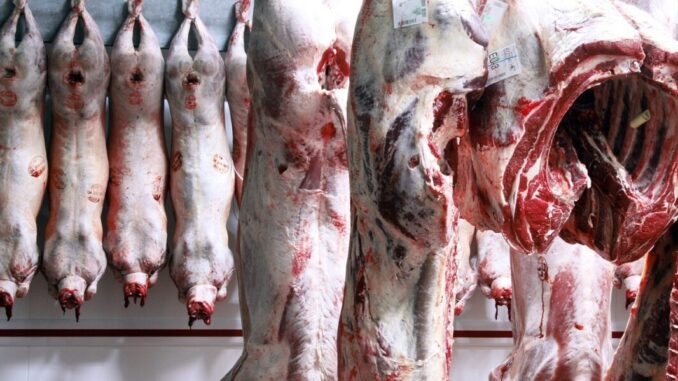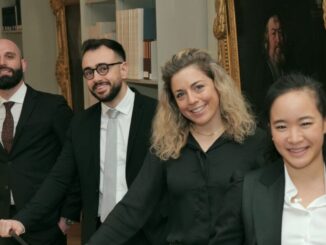
Meat is a lot of things at once. A food on our plate, a consumer good at the butcher's shop, a raw material at the slaughterhouse, an animal on the farm. Meat has direct effects on climate change and animal rights. Over the past 150 years, meat production has increased massively, and many are now wondering whether it is right to continue to eat it. Whether it arouses envy or disgust, meat has always been a favorite subject in art and literature. In "Meat – An Exhibition on Inner Life," the Swiss National Library traces this evolution and questions the role of this substance, which is at the same time being alive, a commodity and a food of choice. The exhibition is on view from March 4 to June 30, 2021.
What a strange thing to have than meat! Before becoming a nice piece on our plate, she has to leave the countryside and go through the butcher's shop and the slaughterhouse. The path it travels raises several questions relating to health, animal welfare and the environment: what does it hide? What place does it have in history? Does it still have a taste for the future? Meat consumption in Switzerland has changed considerably over the past 150 years. New modes of production and consumption raise questions about the limits of bearable, for humans and animals. Problematic conditions of slaughter, systematic use of antibiotics, deforestation of the rainforest in favour of arable land: the debate around omnivorous, vegetarian or vegan food is more topical than ever. By choosing between a cervelas or a piece of cheese, we define our values and our identity. Ethics lurks at the end of our fork.
Fancy meat – Disgust for meat
In "Meat – An Exhibition on Inner Life," the Swiss National Library traces this evolution and questions the role of this substance, which is both a living being, a commodity and a food of choice. The multimedia exhibition consists of five components: "Renounce," "Present," "Eat," "Make Sausages" and "Slaughter." The objects and works from the collection of the Swiss National Library are at the heart of the exhibition, proof of the interest that many artists and authors have in meat, whether it inspires envy or disgust.
While the presence of certain exhibits is obvious, others are more surprising: when it comes to meat, presentation plays an essential role. The whole art of the butcher is to cut the bodies of dead animals into beautiful slices of dimensions observing precise standards to make these pieces appetizing. The Swiss Meat Professional Union regularly publishes information on the nomenclature of meat parts. Visitors to the exhibition will be able to see the meat through the eyes of the butchers.
Fricadelles are a universal art form: this is one of the ideas that Daniel Spoerri develops in his provocative doctoral thesis on minced meatballs ("A Dissertation on Keftedes"). By studying this dish, the artist brilliantly follows the lines that link art, literature and science. It is also through his recipe files that Spoerri proves to be master of "eat art". These contain instructions – illustrated by artist friends – on how to cook certain foods, such as brains, white kidneys or blood.
Sausage is an almost inexhaustible source of inspiration in art and literature: whether from the point of view of cannibalism in "Die Wurst", one of the first accounts of Friedrich Durenmatt, humour in Carl Spitteler's poem "Salami" or order in posters ("Wurstmappe") by Christoph Hunsli.The sausage is also popular with advertisers. Bell SA touts products from its slaughterhouses using a modern language that appeals to Swiss households, as evidenced by the poster for the mortadella at Atelier Eidenbenz and the Bell poster by Swiss graphic designer Lora Lamm, both visible in the exhibition.
In his novel "Blesch", the Swiss author – and butcher by training – Beat Sterchi gives a striking representation of a slaughterhouse. The exhibition presents not only his book, but also the list of cows published in "Bsch" and his draft of the novel.
"Meat – An Exhibition on Inner Life" is an invitation to explore from different points of view this strange thing that is meat. The exhibition is on view at the Swiss National Library from 4 March to 30 June 2021.
March 4 to June 30, 2021, Monday to Friday, 9 a.m. to 6 p.m., admission free.
Admin.ch – Switzerland Government Portal – Source and details release




Be the first to comment